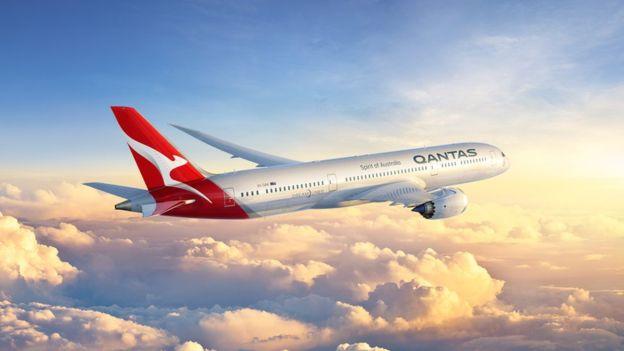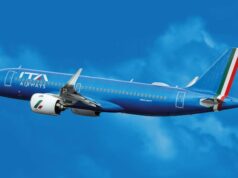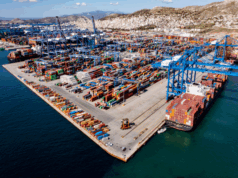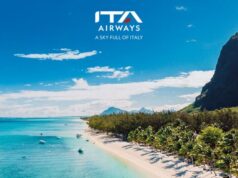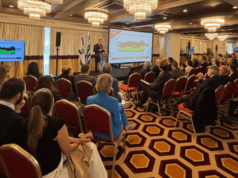Qantas began the first non-stop flights between Australia and the United Kingdom on Saturday, March 24. The 17-hour trip is a departure from an era when glamorous perceptions masked the tedium of a days-long journey. Now, as Julian Lorkin reports from Sydney, much focus is on the body clock.
In less than a century, travelling from Australia to the UK has evolved from a six-week sea voyage to just a single flight taking 17 hours.
There will be no stopovers on 24 March, when Flight QF9 leaves from Perth, Western Australia’s capital, at 18:45 local time for London.
It returns as QF10 on 25 March, leaving Heathrow at 13.30 local time and arriving the next day.
The 14,498km (9,000 miles) service will be the first non-stop link between the nations.
How long did it take in the early days?
The first trip on the so-called “Kangaroo Route” started in 1935. That journey had 10 major stopovers and 21 more refuelling stops over a distance of 20,525km (12,700 miles).
The co-pilot of the tiny De Havilland 86 handed out sandwiches, and the fare cost the equivalent of around A$18,000 (£10,000; $14,000) today.
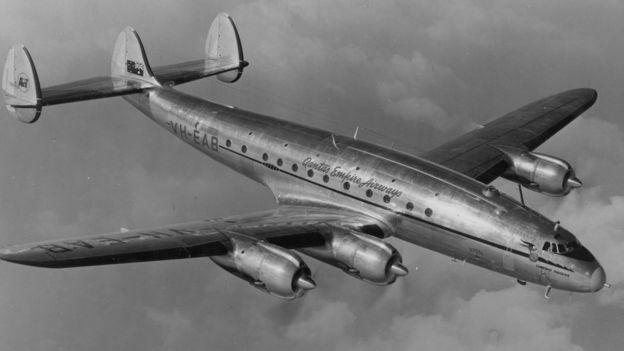
By 1938, “flying boats” flew from Sydney for Southampton – a trip that lasted nine days. Cabins were so spacious that passengers could stroll around and smoke.
Over the decades stopovers reduced, but the first flights that modern travellers would recognise started in 1971.
With two stopovers, Qantas Boeing 747 passengers were advised to bring “several books”. The “Captain Cook Lounge” bar behind the cockpit provided the only other entertainment, the airline said.
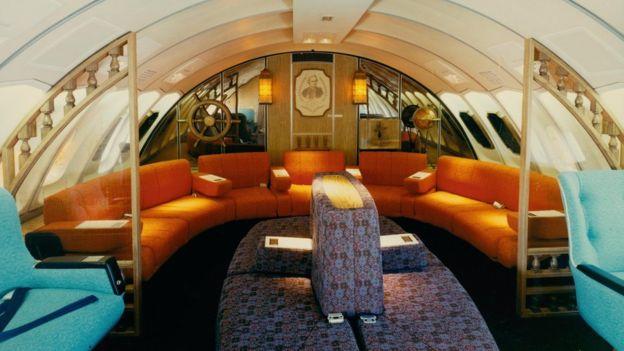
Why can we fly direct now?
The route uses the Boeing 787-9 Dreamliner, which is twice as fuel efficient as the Boeing 747. It also improves cabin air pressure.
“Non-stop flights have been talked about for many years, but aircraft technology has only just caught up,” said Dr Dean Wilkie, a consumer marketing expert from the University of Adelaide.
- Qantas announces non-stop London to Perth route
- The low-cost airline changing the way we fly
- Can long-haul air travel also be low cost?
The flight will be the world’s second-longest after Qatar Airways’ route from Doha to Auckland, which spans 14,529km, according to the International Air Transport Association.
Other carriers, including Emirates and United Airlines, have also flown non-stop journeys greater than 14,000km.
As technology advances make ultra-long flights more economically viable, other challengers are expected.
Singapore Airlines plans to claim back the coveted longest-flight trophy, with a 15,300km journey between Singapore and New York.
It once flew that route using Airbus A340-500s, but stopped in 2013 because the four-engine plane was inefficient.
Airbus is refining the A350, and its latest model will have a range of about 17,960km. That puts the prospect of an even longer route – such as Sydney to London – within reach.
Who benefits from this route?
The Western Australia (WA) state government is expecting an increase in tourist numbers after an advertising blitz in London that calls on people to “wake up in Western Australia”.
The state has entered into a A$5.7m (£3.2m GBP) marketing agreement with Qantas, including screens showing the highlights of WA at London’s Liverpool Street station.
According to state Tourism Minister Paul Papalia, “the campaign encourages travel into regional WA, as well as [local attractions] Rottnest Island, Elizabeth Quay and Perth’s beaches”.
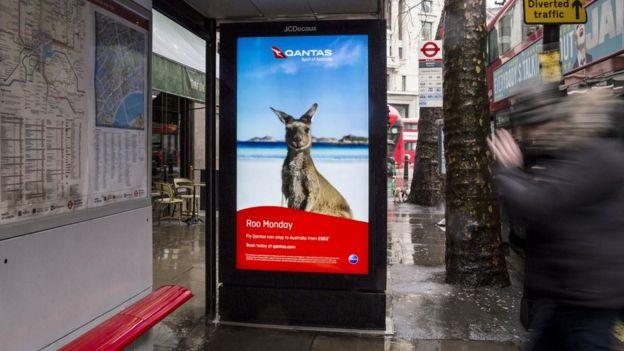
Qantas potentially has an untapped market, according to Dr Wilkie.
“The UK is a standout market for Qantas, but many tourists never consider Western Australia. Now they’ll get to see Perth too,” he told the BBC. Melbourne will also benefit from a connecting flight.
Fierce competition from Asia-based airlines should also put pressure on fares, Dr Wilkie said.
What’s it like flying for 17 hours in economy?
Singapore Airlines abandoned its previous flight to New York after deciding that 19 hours was too much to tolerate in economy. A move to convert the entire aircraft into business class was not financially sustainable.
Now experts are looking at ways to minimise the toll that long-haul flights can have on passengers in economy.
Prof Steve Simpson, from the University of Sydney’s Charles Perkins Centre, works with Qantas to study the impact of such a long flight on the human body. He describes it a test of human endurance.
“Your circadian rhythm takes cues off food and light, and this flight disrupts it,” he said.
He said that’s why flight attendants typically lower window shades and serve meals at destination times – a move that often surprises passengers.
Twenty people on the inaugural UK-Australia flight will be wired into monitors to check how their bodies are coping, including their temperature, which is crucial for sleeping.
“It will be 22C (72F) when people board, but 4C lower mid-flight, which tricks the body to change their internal clock,” he said.
Passengers can also use strategies to help themselves, he added.
“Get up really early a few days before the flight. Have an early lunch at [the airport], maybe at 10am,” he said.
“The first meal on the plane becomes dinner. You’ll sleep, even though it’s only 4pm.”

